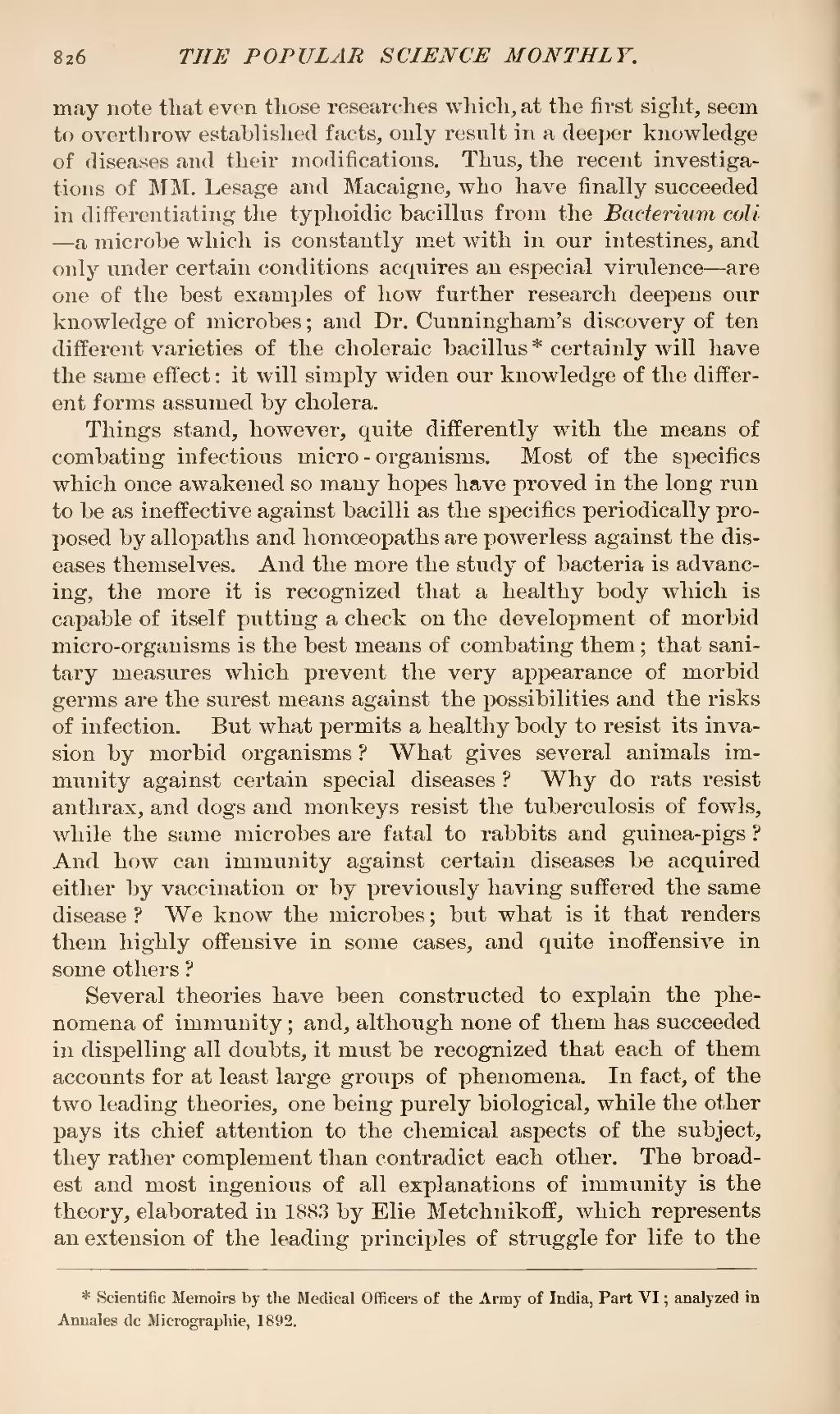may note that even those researches which, at the first sight, seem to overthrow established facts, only result in a deeper knowledge of diseases and their modifications. Thus, the recent investigations of MM. Lesage and Macaigne, who have finally succeeded in differentiating the typhoidic bacillus from the Bacterium coli—a microbe which is constantly met with in our intestines, and only under certain conditions acquires an especial virulence—are one of the best examples of how further research deepens our knowledge of microbes; and Dr. Cunningham's discovery of ten different varieties of the choleraic bacillus[1] certainly will have the same effect: it will simply widen our knowledge of the different forms assumed by cholera.
Things stand, however, quite differently with the means of combating infectious micro-organisms. Most of the specifics which once awakened so many hopes have proved in the long run to be as ineffective against bacilli as the specifics periodically proposed by allopaths and homœopaths are powerless against the diseases themselves. And the more the study of bacteria is advancing, the more it is recognized that a healthy body which is capable of itself putting a check on the development of morbid micro-organisms is the best means of combating them; that sanitary measures which prevent the very appearance of morbid germs are the surest means against the possibilities and the risks of infection. But what permits a healthy body to resist its invasion by morbid organisms? What gives several animals immunity against certain special diseases? Why do rats resist anthrax, and dogs and monkeys resist the tuberculosis of fowls, while the same microbes are fatal to rabbits and guinea-pigs? And how can immunity against certain diseases be acquired either by vaccination or by previously having suffered the same disease? We know the microbes; but what is it that renders them highly offensive in some cases, and quite inoffensive in some others?
Several theories have been constructed to explain the phenomena of immunity; and, although none of them has succeeded in dispelling all doubts, it must be recognized that each of them accounts for at least large groups of phenomena. In fact, of the two leading theories, one being purely biological, while the other pays its chief attention to the chemical aspects of the subject, they rather complement than contradict each other. The broadest and most ingenious of all explanations of immunity is the theory, elaborated in 1883 by Elie Metchnikoff, which represents an extension of the leading principles of struggle for life to the
- ↑ Scientific Memoirs by the Medical Officers of the Army of India, Part VI; analyzed in Annales de Micrographie, 1892.
